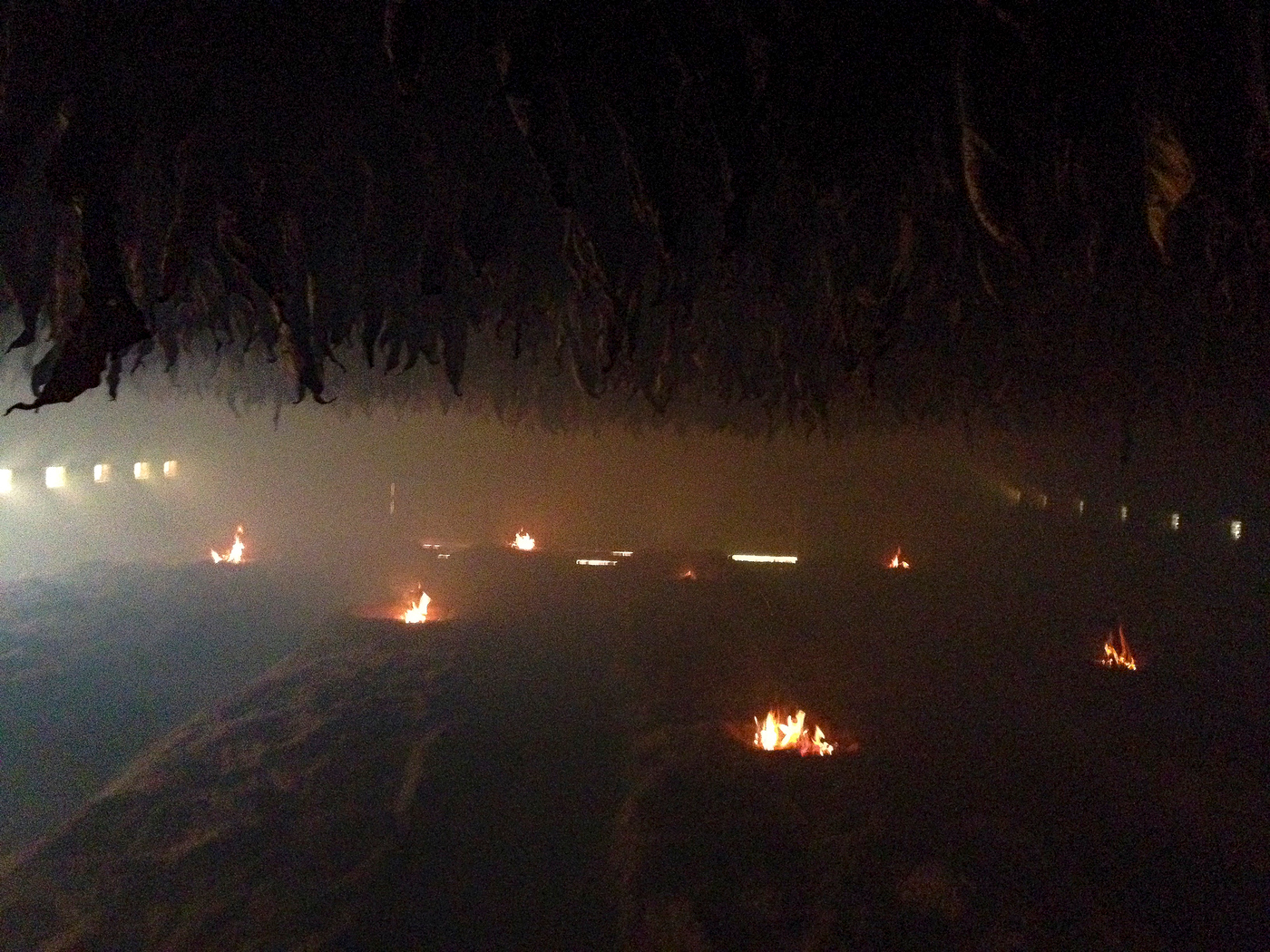The Growing Fascination with Dark-Fired Kentucky
April 21, 2015 By Russ
When I introduced BlackHouse in 2011, it included a small amount of dark-fired Kentucky. It was only the second blend that I had made with it, and I always treated it (and still do) as a condimental tobacco. I knew of Orlik Dark Strong dark-firedKentucky and Peter Heinrich’s Dark Strong Flake as being fairly stout in their dark-fired content, and that Peterson’s Irish Flake had quite a bit, too. While I liked these blends, It never occurred to me to try to make anything quite that strong. Since that time, though, a number of new blends have hit the market with robust amounts of dark-fired, such as GL Pease’ Jackknife Plug and Mac Baren’s HH Old Dark Fired and HH Bold Kentucky.
Why the sudden interest in this leaf? Maybe it will help to discuss what it is, first. Is dark-fired Kentucky a Burley? It depends on who you talk to. Most people say yes as the raw leaf is certainly more like Burley than any other type of leaf. But the growers refer to it as Kentucky and never call it Burley. In any case, it’s a darker leaf, low in sugar, high in oils and a bold spiciness, even before the fire-curing. Instead of hanging the tobacco is a barn and allowing the air movement to cure the leaf, the barn has a smoldering fire using aromatic woods, in the US, hickory is often used. One common misconception is that, because of its name, it’s only grown and processed in America. Much of the dark-fired, especially in the European market comes from Africa, and since the native woods there are different, the resulting flavor and aroma is different as well.
The smokiness of dark-fired is less pronounced than Latakia, and unlike Latakia, dark-fired Kentucky has a lot of spice and a pretty fair nicotine hit. I consider the flavor to be rustic. The American version, probably due to the soil and wood, has a hearty character, while the African type has a somewhat floral undertone. Until recent years, dark-fired was almost always used as a condimental tobacco, used to add a subtle smoky flavor and a bit of power. But newer blends are using it much more prominently, and the results can be very interesting. I find Orlik’s Dark Strong Kentucky and Mac Baren’s HH Old Dark Fired to exhibit more of the floral note, while HH Bold Kentucky is more earthy, and I think that part of that is due to the fact that it uses both African and American dark-fired.
Dark-Fired takes on a whole new character depending upon what it’s combined with. I like it best when counterbalanced with some sweetness. When I put together my first blend in the RO Series, Fire Storm, I combined some Kentucky with extra-sweet Virginias and a robust amount of Perique. The blend is unabashedly bold, but the sweetness levels out the somewhat harsh nature of the dark-fired. In the case of BlackHouse, and the blend it attempts to emulate, Balkan Sobranie No. 759, it adds a bit of a bass note to deepen the flavor of an otherwise bright and smoky blend.
One of the signature characteristics, for me, is a little bit of a catch in the back of my throat, much like I get from a spicy cigar. I don’t mind it, but it’s helpful to know if I’m sampling a new blend because it lets me know if there’s Kentucky in the mix.
Will I ever approach dark-fired Kentucky as the main component in a blend? Anything’s possible, but the blend would have to be very special. But there’s a uniquely processed form of dark-fired that I’ve recently gotten a chance to “play” with, and this could be very interesting. I’ll let you know as things progress.
http://www.talkingtobacco.com/2015/04/the-growing-fascination-with-dark-fired-kentucky/









